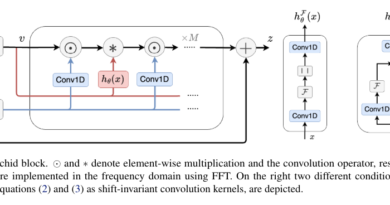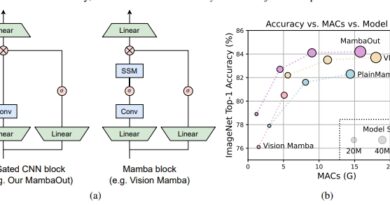Anomaly Detection For Video Based Security and Surveillance: Enhancing Safety with Artificial Intelligence
With the advancement of technology, video-based security and surveillance systems have become an integral part of ensuring safety in various environments, including public spaces, retail stores, and industrial facilities. These systems generate vast amounts of video data that need to be monitored in real-time to identify potential threats or abnormal activities. To address this challenge, anomaly detection techniques, powered by artificial intelligence and machine learning, have emerged as crucial tools for enhancing the effectiveness of video-based security and surveillance systems.
What is Anomaly Detection?
Anomaly detection, also known as outlier detection, is the process of identifying observations, occurrences, or data points that deviate significantly from the norm or expected behavior [1]. In the context of video-based security and surveillance, anomaly detection systems aim to distinguish abnormal activities or events from normal ones captured in video data. By establishing a baseline of normal behavior, these systems can detect and alert security personnel to any deviations that may indicate potential threats or security breaches.
🔥Explore 3500+ AI Tools and 2000+ GPTs at AI Toolhouse
Use Cases of Anomaly Detection in Security and Surveillance
Anomaly detection techniques have found application in various use cases within the realm of security and surveillance. Here are some prominent examples:
1. Detecting Theft and Robbery
Theft and robbery pose significant challenges to retailers, public spaces, and other environments. Anomaly detection in security cameras can help identify suspicious behaviors, such as individuals loitering near high-value items or exhibiting sudden, erratic movements [14]. By leveraging machine learning algorithms and statistical techniques, anomaly detection systems can alert security personnel to unusual activities, enabling timely intervention and prevention of potential theft incidents.
2. Addressing Assault and Violence
Maintaining public safety in crowded areas or public spaces requires effective measures to detect and prevent assault and violence. Anomaly detection models can analyze video feeds to identify physical altercations or aggressive behavior, triggering immediate responses from security personnel [14]. By integrating video-based anomaly detection into traditional surveillance methods, security teams can enhance their ability to identify and prevent violent incidents.
3. Mitigating Vandalism and Property Damage
Vandalism not only causes financial losses but also disrupts community life. Anomaly detection systems can identify suspicious activities such as graffiti, property damage, or unauthorized access, allowing for quick response and intervention [14]. By alerting authorities to unusual behaviors or activities, these systems contribute to a safer environment and a decrease in property damage incidents.
4. Enhancing Arrest and Law Enforcement
Anomaly detection is not limited to preventing crimes but can also aid law enforcement agencies in their efforts. By analyzing patterns of behavior, security systems can assist in identifying individuals with outstanding arrest warrants or known criminal histories [14]. Successful applications of anomaly detection in citywide surveillance systems have helped law enforcement locate and apprehend individuals involved in criminal activities, significantly improving overall community safety.
The Role of Deep Learning in Anomaly Detection
Deep learning, a subset of artificial intelligence, has revolutionized the field of anomaly detection in video-based security and surveillance. Convolutional neural networks (CNNs), in particular, have demonstrated exceptional capabilities in extracting complex spatial and temporal patterns from video data [16]. By training on a large volume of labeled data, these deep learning models can autonomously identify anomalies or unusual patterns without explicit supervision.
One key advantage of deep learning in anomaly detection is its ability to learn hierarchical representations of visual data, allowing for the extraction of intricate features that might not be apparent through traditional methods [16]. Moreover, deep learning models can adapt to evolving threats and changing environments, making them well-suited for anomaly detection systems that need to stay up-to-date with emerging security risks.
Transfer learning is another technique that has gained popularity in anomaly detection. By leveraging pre-trained models on massive datasets, transfer learning allows anomaly detection systems to adapt to specific anomaly detection tasks with limited labeled data [16]. This approach is particularly valuable in scenarios where anomalies manifest in various shapes, sizes, and colors, making it challenging to collect a diverse dataset of labeled anomaly images.
Supervised vs. Unsupervised Learning in Anomaly Detection
In the realm of anomaly detection, unsupervised learning techniques take precedence due to their inherent robustness in dealing with diverse and unpredictable anomalies. Unsupervised learning involves training anomaly detection models on data without labeled examples of anomalies, allowing the system to learn from the normal behavior captured in the training data [8].
Supervised learning, on the other hand, requires a sufficiently diverse dataset of labeled anomaly images, which can be challenging to obtain in real-world scenarios. Anomalies can manifest in various ways, and collecting a comprehensive dataset that covers all possible anomalies is often impractical [8]. However, supervised learning can still be valuable when specific anomaly types are well-defined and labeled examples are available.
Challenges and Future Directions
While anomaly detection techniques have made significant advancements in the field of video-based security and surveillance, several challenges remain:
Scarce Labeled Data for Anomalies
The scarcity of labeled data for anomalies is a persistent challenge in anomaly detection. Anomalies can occur in diverse forms, and collecting a comprehensive dataset that covers all possible anomalies is a complex task [15]. To address this challenge, researchers are exploring techniques such as transfer learning and self-supervised learning to leverage pre-trained models and unlabeled data for anomaly detection [9].
Adaptability to Dynamic Environments
Anomaly detection systems need to be adaptable to changes in the environment or system dynamics. Normal patterns of behavior may evolve over time, and anomaly detection models should be able to accurately identify anomalies in these evolving scenarios [15]. Ensuring the robustness of anomaly detection models to unforeseen anomalies and their ability to adapt to dynamic environments remains an active area of research [15].
Explainability and Interpretability
In applications such as security and surveillance, understanding the reasoning behind an anomaly prediction is crucial. Explainability and interpretability of anomaly detection models are becoming increasingly important to gain trust and effectively respond to potential threats [15]. Researchers are exploring methods to make anomaly detection models more transparent and interpretable, enabling security personnel to understand the basis for an anomaly prediction.
Future directions in anomaly detection may involve the integration of multimodal information, incorporating not just visual data from video feeds but also other sensor inputs such as audio or environmental data [15]. This comprehensive approach can provide a more holistic understanding of the environment and enhance anomaly detection capabilities.
Conclusion
Anomaly detection techniques powered by artificial intelligence and machine learning have significantly enhanced video-based security and surveillance systems. By identifying deviations from the norm in real-time video data, these systems can alert security personnel to potential threats, enabling proactive responses and timely interventions. Deep learning models, such as convolutional neural networks, have played a crucial role in autonomously detecting complex spatial and temporal patterns in video data.
Despite the advancements, challenges persist in anomaly detection, including the scarcity of labeled anomaly data and the need for adaptability to dynamic environments. However, by combining sophisticated models with innovative methods and techniques, researchers and practitioners are paving the way for more reliable and effective anomaly detection systems. The continued development of anomaly detection holds immense potential to contribute to the safety and security of various industries and societal areas.
In conclusion, anomaly detection techniques powered by artificial intelligence and machine learning have transformed video-based security and surveillance. The continuous advancements in deep learning, coupled with innovative approaches, offer new opportunities for improving safety and security in various environments. By harnessing the power of anomaly detection and leveraging cutting-edge technologies, we can create a safer and more secure world.
Don’t forget to follow us on LinkedIn. Do join our active AI community on Discord.
If you like our work, you will love our Newsletter 📰



